Book Digest: July 16, 2007
July happens to be the anniversary month of four revolutions—the American, the French, the Cuban, and the Nicaraguan. Maybe there is a theory that explains this; more likely it’s an accident of the calendar. What does not seem accidental is that we seem to appreciate revolutions from a temporal distance—though China’s venerable Chou En-Lai, when asked about the French Revolution, responded that it was too soon to tell. And it is unlikely that many Americans would affirm Thomas Jefferson’s sentiment that “Every generation needs a new revolution.” The great French observer de Tocqville opined sagely, “In a revolution, as in a novel, the most difficult part to invent is the end.” Of which we have ample evidence. Wherever you stand on instruments of social change, writer James Lee Burke seems to have a correct perspective: “We decry violence all the time in this country, but look at our history. We were born in a violent revolution, and we’ve been in wars ever since. We’re not a pacific people.”
The Iambics of Newfoundland: Notes From an Unknown Shore by Robert Finch
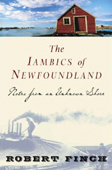
In steady drumbeat, Newfoundland has been making its way into the consciousness of literateurs. First came Annie Proulx’s Shipping News; then various of Wayne Johnston’s novels; then John Gimlette’s amusing travelogue-cum-memoir Theatre of Fish; then (as Michael Ondaatje pointed out to me recently) it was the breeding ground for excellent young writers like Lisa Moore and Michael Winter. Now comes accomplished nature writer Robert Finch’s panegyrics to this remote landscape. The book’s title owes itself to a hitchhiker Finch picked up who extolled Newfoundland’s uniqueness—”if you got the iambics of the place.” It would seem Finch did.
Silence by Thomas Perry
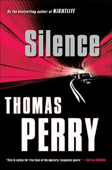
Though he’s best known for his six or so Jane Whitfield books, I came to Thomas Perry via his Edgar-award-winning The Butcher’s Boy and its sequel, Metzger’s Dog. Perry puts his tight grasp of the details of all manner of professions and activities—criminal and legal—to compelling use in his page-turners. In Silence we have former cop Jack Till once again helping a client he helped to disappear after a brutal attempt on her life, and whom he must now find to exonerate her former partner, who stands accused of murdering her. Perry is a master storyteller—if you don’t know his work, this would be the time to avail yourself of it.
» Read an excerpt from Silence
The Economic Naturalist: In Search of Explanations for Everyday Enigmas by Robert Frank
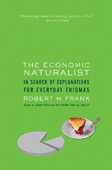
The subject of economics is considerably brightened by the amusing observations and questions of Cornell professor Robert Frank, who also writes a monthly Economic Scene column in the New York Times. The Economic Naturalist comes from questions posed by Frank’s freshman economics students when he asked then to mull over things that baffled them in everyday life. He shows how things can make sense economically, yet also seem inconsistent and confusing—which he doses mostly by applying the cost-benefit principle.
» Read an excerpt [pdf] from The Economic Naturalist
Vegetable Harvest: Vegetables at the Center of the Plate by Patricia Wells
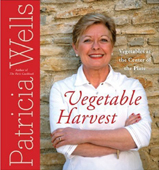
Inspired by the vegetable garden she tends at her home in Provence,this new recipe opus by International Herald Tribune food critic Patricia Wells presents:
…Classics like Spicy Butternut Squash Soup, Roast Leg of Lamb with Honey and Mint Crust, and Pea and Mint Risotto, as well as innovative new dishes that are sure to become time-honored favorites, such as Potato-Chive Waffles with Smoked Salmon, Capers, and Crème Fraîche, Tomato and Strawberry Gazpacho, and Zucchini Blossoms Stuffed with Goat Cheese and Basil. To finish your meal with a flourish, there are decadent, fruity desserts like Pistachio-Cherry Cake with Cherry Sorbet, Rhubarb-Berry Compote in Grenadine, and Crunchy Almond-Pear Cake.
And by the way, it’s all healthy stuff.
» Read an excerpt from Vegetable Harvest
All Over Coffee by Paul Madonna
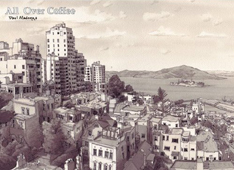
It still amazes me that metropolitan newspapers have ceded attempts at trailblazing to so-called “alternative” and “new” media. Artist Paul Madonna’s work, which the San FranciscoChronicle began publishing in 2004, is an outstanding example of a brilliantly original hybrid of illustration and essay presented in ink-wash drawings, making a place for itself in the mainstream. San Francisco architect Cathy Jensen Simon explains:
The juxtaposition of floating scraps of overheard, disconnected conversations and masterful pen and ink drawings of San Francisco, the city he lovingly documents, reminds us of the serendipity of city life, its physicality and atmosphere, its unanticipated discoveries, its random intersections, its coincidences and ironies.
Open City No. 23, Spring/Summer 2007: Prose by Poets
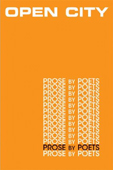
Eighteen poets contribute to this edition of Open City, including Jill Bialosky, Nick Flynn, Jim Harrison, Deborha Garrison, and Anne Sexton—the title being slightly misleading since there is also poetry by these poets. From the last paragraph of Harrison’s “Arizona II”:
The Handsomest Man in Cuba: An Escapade by Lynette Chiang
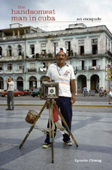
At the age of 34, Australian Lynette Chiang decided to leave “a decent job, three-bedroom house, fastish car and a nice bloke in Sydney and, armed with a congenitally poor sense of direction, set off to see the world on a folding bicycle.” This smart tome is an account of that pedaling around Cuba, and various of her misadventures. This fine book goes kilometers beyond the pedestrian accounts publishers tastelessly push to a market hungry for learning about Cuba.
» Read an excerpt from The Handsomest Man in Cuba
The Jean-Michel Basquiat Show by Glenn O’Brien and Annette Lager, edited by Gianni Mercurio
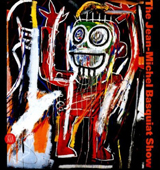
Back when Warhol ruled, Basquiat was a big thing and his anointment to the Pantheon of the Arts was seemingly instantaneous. I found his work silly and just the kind of thing that New York’s art scene could spawn and then pawn off on the rest of the known world. By the time I saw Julian Schnabel’s biopic, Basquiat,I found myself seeing his work with a newfound appreciation—which I suspect is the way art has been received since the cave-wall days. Basquiat is well represented in this formidable monograph, which contains about 170 paintings and drawings and a substantial collection of photographic documentation.
» Read an excerpt from The Jean-Michel Basquiat Show
Marooned: The Next Generation of Desert Island Discs edited by Phil Freeman
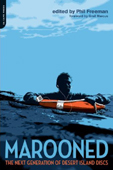
Here’s a parlor game music lovers frequently engage in: What album would you bring to a desert island, and why? In this case, a group of not-quite-contemporary music critics plays along. Greil Marcus’s Stranded is the original text of this genre, and here he provides a foreword:
I like the way again and again people find themselves fetishizing their records—describing their labels, lettering, coloring, pictures hidden in sleeve art. I like the way again and again the writers here blindside the reader, if not themselves…
Kind of Blue: The Making of the Miles Davis Masterpiece by Ashley Kahn

I suppose if I could accept the premise that there is a greatest anything, Miles Davis’s Kind of Blue, which is 50 years old, might qualify as the greatest jazz recording. I certainly never tire of hearing Davis’s sextet, Bill Evans, Wynton Kelly on one track, John Coltrane, Paul Chambers, Jimmy Cobb, and Miles run through this handful of indelible tunes. Ashley Kahn, who has done a similar treatment of John Coltrane’s epic A Love Supreme, diligently digs out previously buried record company files and new photos for this newly republished edition.
» Read an excerpt from Kind of Blue
